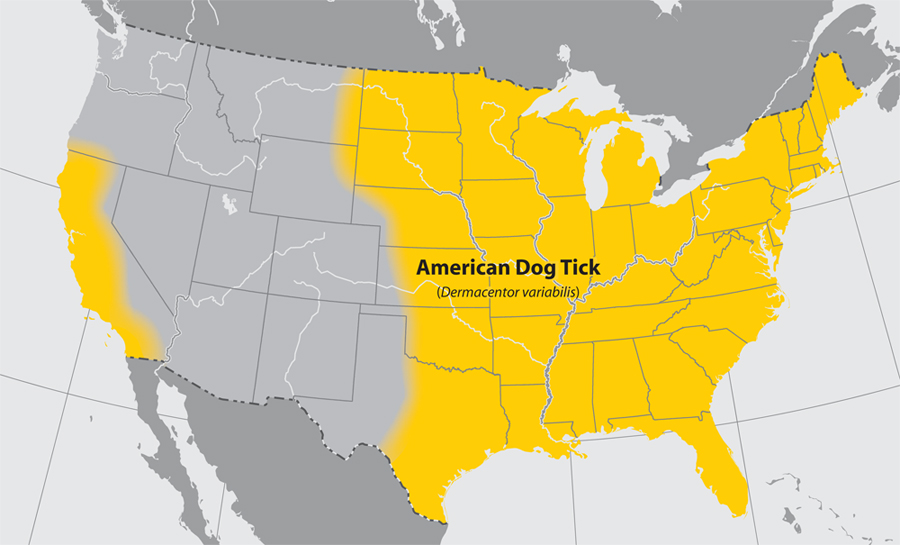The American Dog Tick
(Dermacentor variabilis)

The American dog tick feeds on small animals such as rats and mice in its early stages, but adults are attracted to larger animals. Despite its name, the American dog tick is also a threat to humans because of the pathogens it carries. This tick can transmit Rocky Mountain spotted fever and Tularemia to its human hosts, causing serious illness.
The American Dog Tick can be distinguished by its decorated dorsal shield. The abdomen features festoons around its edge.
This tick makes its home between the East Coast and the Rocky Mountains. It is also found along the West Coast, mostly keeping to California. It prefers wooded, grassy, or brushy areas
The Tick Research Lab of Pennsylvania is able to detect the most common tick-borne diseases in any of these species. Our tick DNA tests are over 99.9% accurate.
Details
American Dog Tick Habitat
American dog ticks (Dermacentor variabilis) are most frequently found covering the eastern part of the United States, all the way to the Rocky Mountain region although they have also been located in a small segment of California along the west coast.
American dog ticks are large in size and can be easily recognized by their brown and red dotted bodies and elaborate dorsal shields. The American dog tick favors environments in brushes and open pathways in forests, and they can also be found in open areas where tree cover is limited.

How American Dog Ticks Behave
Research has shown the dog tick to initiate questing behavior in high light intensity environments with low relative humidity. Their questing behavior is similar to the deer tick, as they will typically climb up grass or vegetation and outstretch their legs waiting for an animal to pass by.
The Life of an American Dog Tick
During the larval life stage, they will typically feed on small animals such as chipmunks, mice, and squirrels. As a nymph and adult, they will seek medium-large sized mammals. Their nickname, “dog tick” comes from how frequently they are found feeding on domestic dogs, although they are known for feeding on cattle, deer, raccoons, and humans.
Their life cycle is parallel to that of a deer tick and will last about 2 years. After hatching from an egg, the larval tick will take a blood meal from a small mammal to engorge with blood. Once full, it will fall off and use the blood as energy to molt into the nymph life stage.
Nymphs will feed on small-medium sized mammals before becoming either an adult male or adult female. Adult males will not feed, and instead, seek a fully engorged female to mate with before falling off to die. Fertilized adult females will go dormant, using the blood meal as energy to lay 4,00-6,00 eggs. As the eggs begin to hatch, the adult female will die.
If dog ticks are unable to find a host to feed upon, they can survive for up to 2 years.
Adults are most active from mid-spring to mid-summer (April-July)

